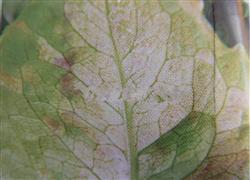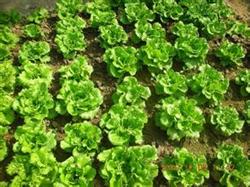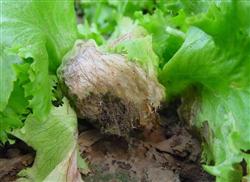Key techniques of lettuce cultivation in open field

Lettuce likes cold environment and is neither cold-resistant nor heat-tolerant. The suitable temperature for growth is 15 ℃ ~ 20 ℃ and the growth period is 90 ~ 100 days. The open field is mainly cultivated in spring and autumn, and vegetable farmers can sow seeds in stages and appear on the market in turn. The seedlings were raised in solar greenhouse or sunny border in March, the seedling age was 30-40 days, planted in early April, harvested from early May to early June, raised in open field from late April to early May, planted in late May, harvested in late June, planted in open field from late June to late July, planted from early July to early August, and harvested from mid-August to late September. 1. According to the growth morphology of leaves, selected and sown lettuce can be divided into heading lettuce and loose leaf lettuce (loose leaf lettuce is divided into wrinkled leaf lettuce and upright lettuce). Heading lettuce: the leaf blade is entire, serrated or deeply parted, the leaf surface is smooth or wrinkled, and the terminal leaf forms a leaf ball, round or round. Wrinkled lettuce: deeply parted leaves, leaf balls loose or non-heading; erect lettuce: leaves entire or serrated, outer leaves narrow and erect, not heading or loose conical balls. Choose suitable varieties according to your needs, such as glass lettuce, emperor, Caesar, heading lettuce, mosaic lettuce, Dahu 659 and so on. ① glass lettuce. Leaf blade light green, wrinkled, glossy. The leaf margin is wavy, the middle rib is white, the leaves are slightly hugged inward, but not tight, the leaves are easy to eat, the dishes are convenient, crisp, tender and refreshing, slightly sweet and of high quality. Emperor ②. Introduced from the United States, the leaf is green, the outer leaf is small, wrinkled, the leaf margin is notched, and the quality is good. It has strong heat tolerance and early maturity, so it is suitable for open field cultivation in early spring and shade cultivation in summer. ③ Caesar. A variety of precocious lettuce introduced from Japan. The plant shape is compact, the growth is neat, the leaf ball is tall and round, light yellowish green, heat-resistant, good heading performance. Second, the sandy loam with good water and fertilizer conservation and fertile soil should be selected for the preparation of lettuce seedlings in seedbed. Bed and soil preparation: 10 square meters of seedling bed with rotten organic fertilizer 10 kg, ammonium sulfate 0.3 kg, calcium superphosphate 0.5 kg, potassium sulfate 0.2 kg, fully mixed evenly to lay Harrow fine, pour enough bottom water, sow seeds after water infiltration. Third, sowing seedlings in order to spread evenly, the seeds can be mixed with a small amount of fine sand, covered with 0.3 cm thick tidal soil after sowing, and covered with plastic film to keep moisturizing. The sowing rate is 30,50g per mu. When the seedlings begin to be unearthed, the plastic film on the border should be opened in time to prevent overgrowth. The suitable temperature of seedling bed should be controlled at 18 ℃ ~ 20 ℃ in daytime and 12 ℃ ~ 14 ℃ at night. Pay attention to ventilation and shade in case of strong light exposure. When the seedlings grow to 2-3 true leaves, the seedlings are divided according to the row spacing of 6-8 cm, and when they grow to 4-5 true leaves, they can be planted, and there is generally no shortage of water at the seedling stage. In order to prevent seedling diseases, spray 1 / 2 times 600 times 75% chlorothalonil. Fourth, scientific fertilization of lettuce requires clay loam rich in organic matter and strong water and fertility conservation. Lettuce likes slight acidity, and the soil pH value is 5-7. For every 1000 kg of lettuce, it is necessary to absorb 2.5kg of nitrogen, 1.2kg of phosphorus and 4.5kg of potassium. Among them, heading lettuce needs more potassium. Nitrogen, phosphorus and potassium fertilizers should be used together during the growing period. The land where lettuce is planted should be ploughed deeply and carefully. Before planting, sufficient basic fertilizer should be applied, and 3000-3500 kg per mu of rotten farm manure should be applied. Turn deeply after application, pour enough bottom water, and make the border after seeing it dry. Fifth, the nursery bed should be irrigated with water one day before careful planting to make the seedlings moist, and the seedlings should carry as much soil as possible the next day to reduce root damage. When planting, first open the ditch on the border surface, the ditch depth is 4cm 6 cm, plant 3 rows on the border surface 70 cm, apply the ternary compound fertilizer according to 25 kg per mu, then irrigate, put the seedlings to cultivate the soil and seal the ditch according to the plant distance of 24 cm, rake the border surface, cover the plastic film, and introduce the seedling out of the film. Sixth, lettuce likes to be wet after planting, and sufficient water supply is required during the whole growth period. Slow seedling water was irrigated once after planting for 5-7 days. After watering the seedlings, the plots without plastic film were ploughed and loosened for two times to weed. After watering 3-4 times, combined with watering, nitrogen and phosphorus fertilizer was applied by stages, 15-20 kg per mu. Stop watering before harvest to facilitate storage and transportation. Seventh, scientific harvest of non-heading lettuce can be harvested by camera according to the market price. It is better for lettuce to be harvested after the bulb is tight, and the yield will be affected prematurely. If it is too late, the stem in the bulb will elongate and the quality of the bulb will decline.
- Prev

Efficient multiple cropping of cabbage, sweet potato seedlings, eggplant and cauliflower
Lettuce likes cold environment and is neither cold-resistant nor heat-resistant. Therefore, if you plant lettuce well, you should master the following technical links. First, the selection of varieties. When growing lettuce, we should choose varieties with good cold and heat tolerance and good stress resistance, such as ball lettuce, glass lettuce, mosaic lettuce and Caesar. Second, soil.
- Next

Symptoms and Control techniques of Botrytis cinerea in lettuce
A reader in Jiangsu asked, what are the symptoms and control methods of lettuce gray mold? Answer: Botrytis cinerea of lettuce mainly harms leaves and stems and can be infected from seedling stage to adult stage. Get sick at the seedling stage. The leaves and young stems rotted in the form of water immersion, and the diseased part was covered with gray mildew layer. The leaves are infected. Start with mature leaves near the ground.
Related
- Where is it suitable to grow horseradish in China? it is expected to see the middle altitude horseradish in Alishan.
- How to prevent tomato virus disease reasonably? (Control methods included)
- Many people like to plant towel gourd on the balcony. What are the main points of this method and management?
- What crops can chili peppers be mixed with?
- Fertilization techniques and matters needing attention in Tomato
- What are the grafting techniques for peach seedlings in spring?
- Harm and control methods of root swelling disease of Chinese cabbage
- What are the pests of sweet potatoes? How to prevent and cure it?
- Symptoms, causes and Control methods of navel Rot in Tomato
- The cause of "Cucumber rotten bibcock" in Farmers' planting Cucumber and its Control Plan

